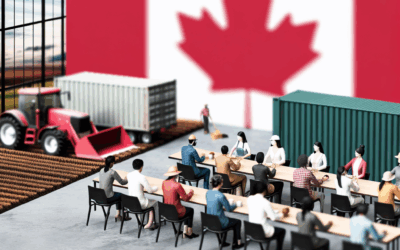Household debt and personal finances are critical topics in Canada, as they directly impact the economic well-being of individuals and the broader economy. With rising living costs, fluctuating interest rates, and evolving financial habits, many Canadians are grappling with managing their debt while striving to achieve financial stability. This article delves into the current state of household debt in Canada, exploring its causes, consequences, and potential solutions. We’ll examine how Canadians are navigating their personal finances, the role of financial literacy, and strategies to reduce debt and build wealth. Whether you’re looking to better understand the financial landscape or seeking actionable advice, this article provides valuable insights to help you take control of your financial future.
The Current State of Household Debt in Canada
Household debt in Canada has reached significant levels, with many Canadians carrying substantial amounts of mortgage, credit card, and personal loan debt. The debt-to-income ratio, a key indicator of financial health, has been steadily increasing, raising concerns about long-term economic stability. Factors such as rising housing costs, stagnant wage growth, and easy access to credit have contributed to this trend. While low interest rates have made borrowing more affordable in the short term, they have also encouraged higher levels of debt accumulation. Understanding the current state of household debt is essential for identifying the challenges Canadians face and developing strategies to address them.
Factors Driving Household Debt
Several factors are driving the rise in household debt across Canada. The soaring cost of housing, particularly in major cities like Toronto and Vancouver, has forced many Canadians to take on larger mortgages. Additionally, the increasing cost of living, including expenses like groceries, transportation, and utilities, has strained household budgets. Easy access to credit cards and personal loans has also played a role, as many Canadians turn to borrowing to cover everyday expenses or unexpected emergencies. Furthermore, cultural attitudes toward debt and spending habits have shifted, with some individuals prioritizing immediate gratification over long-term financial planning. These factors collectively contribute to the growing debt burden faced by Canadian households.
The Impact of Debt on Personal Finances
High levels of household debt can have far-reaching consequences for personal finances. Debt repayments often consume a significant portion of disposable income, leaving little room for savings or investments. This can hinder financial goals such as retirement planning, homeownership, or funding education. Additionally, carrying high levels of debt can lead to increased stress and anxiety, negatively affecting mental health and overall well-being. In extreme cases, excessive debt can result in bankruptcy or insolvency, further exacerbating financial difficulties. Understanding the impact of debt on personal finances is crucial for making informed decisions and taking proactive steps to manage and reduce debt effectively.
The Role of Financial Literacy
Financial literacy plays a vital role in managing household debt and personal finances. Many Canadians lack the knowledge and skills needed to make informed financial decisions, leading to poor money management and increased debt. Improving financial literacy can empower individuals to budget effectively, understand the true cost of borrowing, and make strategic financial choices. Educational initiatives, such as workshops, online resources, and school programs, can help bridge this gap. By equipping Canadians with the tools and knowledge they need, financial literacy can serve as a powerful tool for reducing debt and achieving long-term financial stability.
Strategies to Reduce Debt and Build Wealth
There are several strategies Canadians can adopt to reduce debt and build wealth. Creating a detailed budget is a fundamental step, as it helps track income and expenses, identify areas for savings, and allocate funds toward debt repayment. Prioritizing high-interest debt, such as credit card balances, can minimize interest costs and accelerate debt reduction. Additionally, building an emergency fund can provide a financial cushion, reducing the need to borrow in times of crisis. Investing in assets like retirement accounts or real estate can also help build long-term wealth. By implementing these strategies, Canadians can take control of their finances and work toward a debt-free future.
Government Policies and Support
Government policies and support programs play a crucial role in addressing household debt and promoting financial stability. Initiatives such as tax incentives for savings, affordable housing programs, and financial education campaigns can help alleviate the burden of debt. Additionally, regulations on lending practices and interest rates can protect consumers from predatory borrowing. The government’s role in fostering a stable economic environment, including managing inflation and employment rates, also indirectly impacts household finances. By leveraging these policies and programs, Canadians can access the resources and support needed to manage their debt and improve their financial well-being.
In conclusion, household debt and personal finances are pressing issues in Canada, with significant implications for individuals and the economy. The rising cost of living, easy access to credit, and shifting financial habits have contributed to increasing debt levels, impacting Canadians’ ability to save and invest. However, by understanding the factors driving debt, improving financial literacy, and adopting effective strategies, individuals can take control of their finances and work toward a more secure future. Government policies and support programs also play a vital role in addressing these challenges. Ultimately, managing household debt requires a proactive and informed approach, empowering Canadians to achieve financial stability and build long-term wealth.



